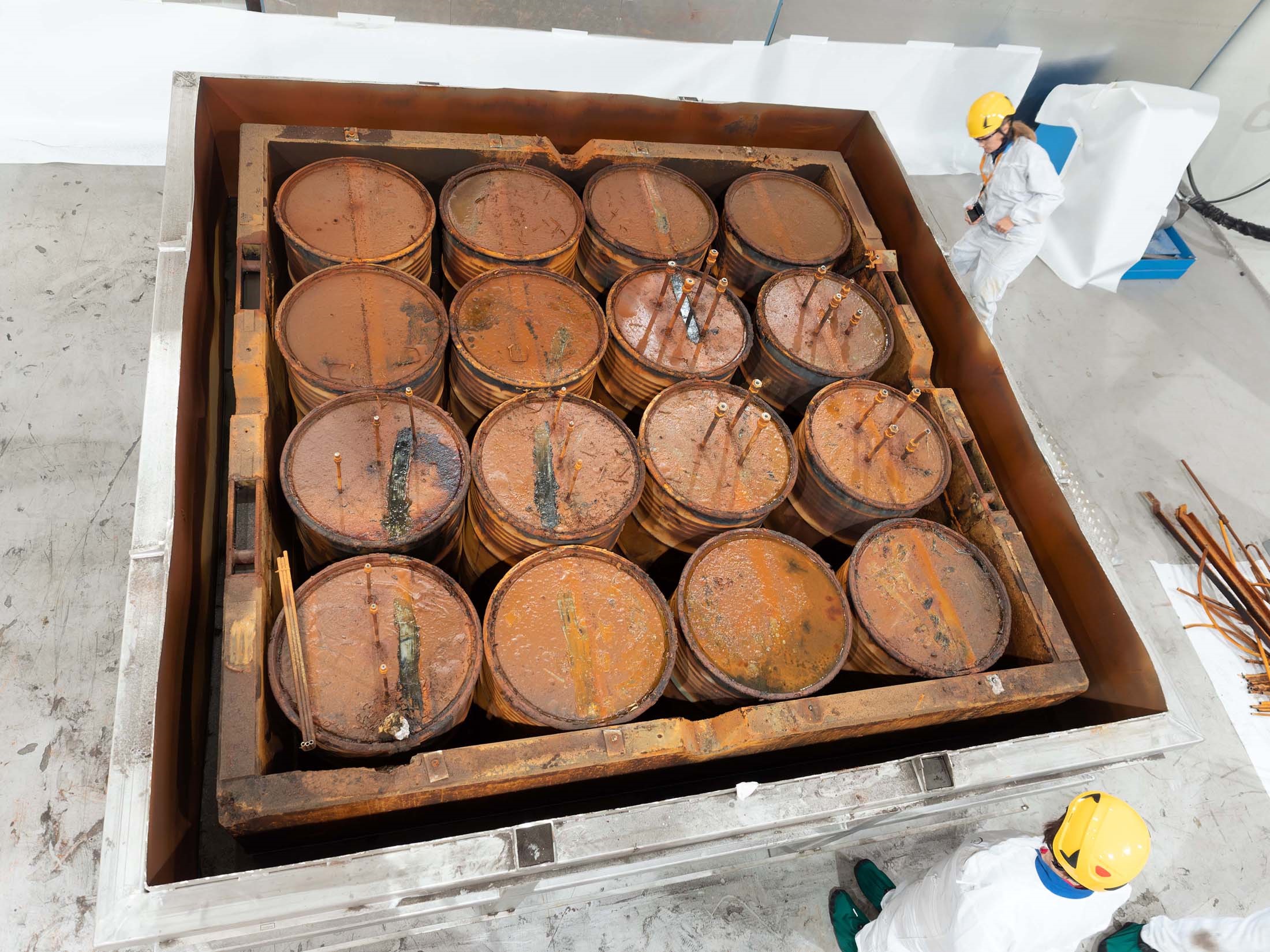“Time capsule” opened in Olkiluoto – related to research started already in 1997
A long-term experiment finally came to a conclusion after 26 years during which TVO acquired valuable information about the behaviour of maintenance waste over time during final disposal.

Maintenance waste placed for final disposal in the operating waste repository contains, for example, a lot of biodegradable material packed in steel barrels. The biodegradation of waste and the corrosion of steel produce gas which in large quantities could expedite the flow of contaminated water from the waste silo into rock and thus promote the migration of the radionuclides contained in water into bedrock crevices.
Due to the unavailability of any experimental data in Finland or abroad on the development of gas in repository conditions, TVO launched its own large-scale test on gas development from low-level maintenance waste.
The test was not only large in scale but also extended over a long period of time, as it was started already in 1997. Initially, the test was funded also by the Research and Innovation Department of the European Commission.
- The biggest benefit of this research is that, going forward, the results of the test can be used as part of the long-term safety assessment, explains Annukka Laitonen, the Project Manager of the R&D Unit.
Test in practical terms
The test assembly comprised an open concrete box which accommodated 16 barrels containing low-level maintenance waste. The contents of the barrels, including the share of biodegradable material, were recorded and the waste was handled in the same way as in the normal final disposal process of waste. The concrete box was placed inside a 20 m3 steel tank filled with river water at the start of the test.
The operating waste repository will be filled with water at the end of its service life, meaning the waste will also become wetted. As the wetting of the waste will start the development of gas, the wetting of the barrels was expedited by drilling holes in them.
The barrels also contained so-called capsule samples. In addition to materials imitating waste, the small capsules also contained fragments of metal used to monitor the development of steel corrosion already during the test by recovering capsules from the barrels over the years.

Ending the test
The test was ended in 2023, 26 years after it started. The justification given for the timing was that the microbiological biodegradation process and corrosion were interpreted to have reached during this time a point after which no strong increase was expected in the rate of gas development even over a prolonged period of time.
The equipment for the gas development test was disassembled in the autumn of 2023. First, the steel tank was opened and drained. The barrels inside the tank were lifted out one by one and their contents emptied and studied visually. Samples were taken of the waste, the steel barrels, and the concrete box and sent to VTT Technical Research Centre of Finland and Aalto University for analysis. The majority of the chemical tests were conducted by TVO’s chemistry laboratory.
Results
Over the years, a total of 27 m3 of gas was developed, i.e., about one cubic metre per year. This amount poses no problems to the safety of final disposal.
- About 90 percent of the gas was methane, and the rest was carbon dioxide, Laitonen tells.
It was observed already when studying the waste contained in the barrels that the degradation rate of organic waste was much lower than assumed. It had been assumed that organic waste would degrade during the first decades, but in fact, the degradation amount was less than 10 percent.
The analysis results of metal samples indicated, among others, that the more the barrel contained biodegradable material, the faster the corrosion of steel. Based on samples drilled from the concrete box, it was concluded that the concrete had stayed in very good condition, also in terms of its microstructure. The strength values that were determined had remained within design criteria, too.
At the start of the test, the water contained in the tank became alkaline due to the cement contained in the concrete. The acid metabolites of the microbes reduced the pH of the water to a neutral level quite soon, however.
The test period was so long that significant advances took place during the test regarding methods of microbiological research, particularly DNA analytics. This made it possible to analyse the test microbe populations in much more detail than initially anticipated.
The studies associated with the ending of the gas development test were carried out in the Gasoff Project as part of the SAFER2028 Programme with funding from the State Nuclear Waste Management Fund during the years 2023–2024.
Text: Ville Kulmala
Photos: Mikko Nykyri and Natalia Kylliäinen